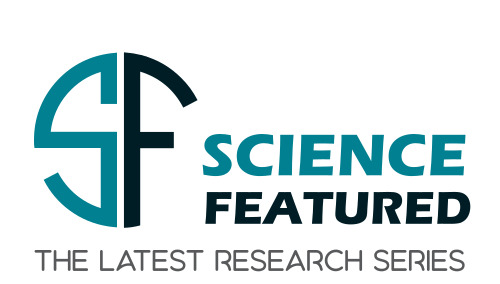Unlocking the secrets of molecular construction holds the promise of breakthroughs across a spectrum of fields, from developing new medicines that could save millions of lives to pioneering materials that could redefine the future of technology. At the heart of this scientific endeavor is a humble molecule known as quinoxaline. Its derivatives, versatile compounds with the potential to revolutionize pharmaceuticals, agriculture, and materials science, are the focus of a fascinating new development in chemical synthesis. This advancement, rooted in the fine art of molecular craftsmanship, stands at the threshold of a new era, where the synthesis of complex molecules is not only possible but also more efficient and environmentally friendly than ever before.
In a groundbreaking study led by Dr. Judit Beagle, alongside her team comprising Eric Horsting and Jacob Buechele from the University of Dayton, and Dr. Lucas Beagle from UES Inc., a new method for synthesizing quinoxaline derivatives has been developed. This research, which spans the disciplines of pharmaceuticals, agriculture, and materials science, utilizes a microwave-assisted, one-pot procedure to achieve efficient access to symmetrically 2,3-substituted quinoxalines without the reliance on metal catalysts. Their innovative work is detailed in the esteemed journal, Results in Chemistry.
Quinoxaline derivatives stand as pivotal building blocks in the fabrication of compounds known for their diverse pharmacological activities, including those with antibacterial, antifungal, anticancer, and antitubercular properties. Traditionally, the formation of carbon-heteroatom bonds at the 2,3-positions on quinoxaline posed significant challenges, often requiring metal catalysts that could complicate the synthesis process. The method introduced by Dr. Beagle and her team offers a cleaner, more efficient pathway to these invaluable compounds.
Dr. Judit Beagle, reflecting on the importance of their findings, noted, “Substituted quinoxalines constitute building blocks for many compounds with diverse pharmacological activity.” This emphasizes the critical role quinoxaline derivatives play in developing a wide array of therapeutic agents.
This novel approach leverages microwave energy to expedite the synthesis process, allowing for rapid heating of the reaction mixture and, consequently, faster and more efficient chemical reactions. This technique contrasts sharply with traditional methods that typically require prolonged heating and the use of metal catalysts, presenting a more sustainable and cost-effective alternative for producing complex chemical compounds.
Dr. Beagle, elaborating on the broader impact of their research, stated, “Our study aimed not only to advance the synthesis of quinoxaline derivatives but also to expand their application in creating more effective and safer drugs, pesticides, and materials. The microwave-assisted technique we’ve developed represents a significant step toward achieving this goal.”
Furthermore, Dr. Beagle highlighted the practicality and efficiency of their research method, saying, “This research focuses on a robust microwave-assisted one-pot procedure to gain efficient access to symmetrically 2,3-substituted quinoxalines without the use of a metal catalyst.” This statement underscores the innovative aspect of their synthesis process, which simplifies the production of quinoxaline derivatives by eliminating the need for metal catalysts.
In addition to its pharmaceutical implications, the study also contributes to materials science, where quinoxaline derivatives are used as electroluminescent materials and organic semiconductors. The efficient synthesis of these compounds could herald advances in electronic devices, including solar cells and sensors, enhancing their performance and eco-friendliness. In conclusion, the collaborative research effort led by Dr. Judit Beagle, with significant contributions from Dr. Lucas Beagle, Eric Horsting, and Jacob Buechele, marks a considerable advancement in the synthesis of quinoxaline derivatives. This work not only paves the way for their broader application in medicinal chemistry and materials science but also introduces more sustainable and efficient production methods, propelling the fields of pharmaceuticals and materials research forward.
JOURNAL REFERENCE
Dr. Judit Beagle, Dr. Lucas Beagle, Eric Horsting, Jacob Buechele, “Microwave-assisted synthesis of quinoxaline derivatives,” Results in Chemistry, 2023.
DOI: https://doi.org/10.1016/j.rechem.2023.101211.
ABOUT THE AUTHORS

Dr. Judit Beagle, originally from Hungary, has a long passion for chemistry. She has gained an interest in chemistry early on. After earning her Master’s in chemistry with the focus on pharmaceuticals in 2007, she moved to Florida and joined Prof. Alan R. Katritzky’s research group, where she earned a Ph.D in chemistry (2012) followed by a postdoctoral appointment at the University of Georgia in heterocyclic chemistry. Dr. Beagle then joined the faculty at the University of Dayton in 2014 where she continued her pursuits in scholarship and research in organic chemistry. Her research focused on developing new methodologies using microwave assisted synthesis of biologically relevant molecules.

Dr. Lucas K. Beagle graduated from the Wright State University in 2005 with a B.S. in biological sciences, Youngstown State in 2008 with a master’s in chemistry and University of Dayton in 2020 with a master’s in bioengineering. He completed his Ph.D. in Chemistry from the University of Florida in 2012 with a focus on heterocycles and medicinal chemistry. He is currently Director of Biological and Nanoscale Technologies Division at the UES, Inc., supporting research in the Materials and Manufacturing Directorate at the Air Force Research Laboratory. His research areas include synthesis and processing of covalent organic frameworks (COFs) and other polymers, microwave chemistry and processing, hybrid organic/2D-inorganic systems, 2D heterostructures, and novel design of chemical and biological sensors.

Eric Horsting was born in Indianapolis and raised in Plainfield, IN. He attended Plainfield High School where he played soccer and developed a deep interest in science and math. Upon graduation, he attended the University of Dayton–which he regards as one of his greatest decisions–where he studied Chemical Engineering. While at UD Eric began doing research with Dr. Judit Beagle. This research culminated in the presentation and defense of his thesis on the Microwave-Assisted Synthesis of Quinoxaline Derivatives. Since graduation from UD, Eric has been working at Johnson & Johnson as part of their Global Operations Leadership Development Program.

Jacob Buechele grew up in the Dayton, OH area and attended the University of Dayton. He worked alongside Judit Beagle for two years during his academic career. After graduating, he went on to work as a Project Manager with Thompson Industrial Services in their Southeast Chemical Cleaning Division. He currently lives in Columbia, SC with his fiancé.













































